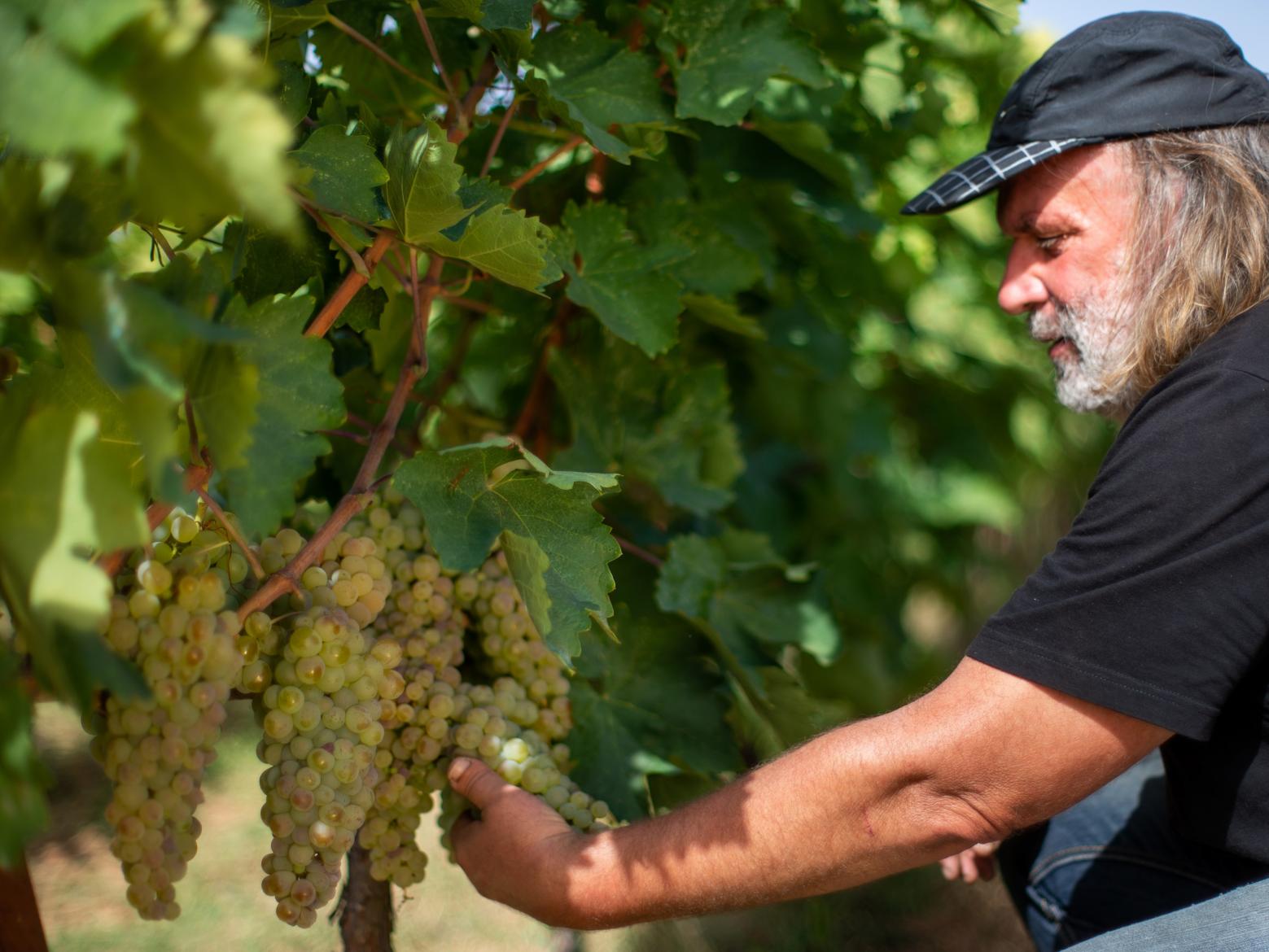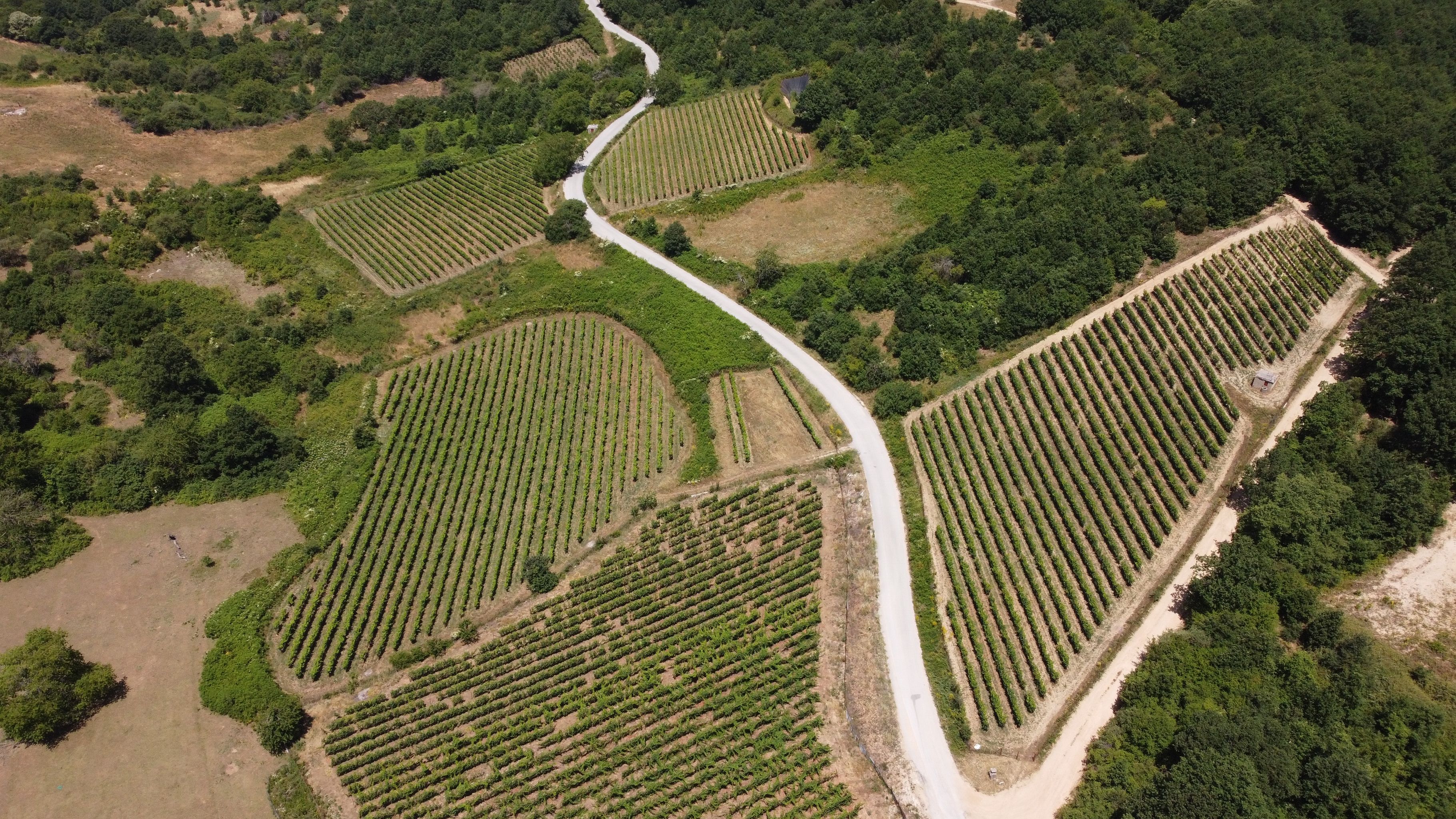The wines of Kitas winery
By Olga Antoniadou
The Kitas Winery is located in Lapsista of Zitsa in the Epirus region and I was lucky to discover Vasilis Kitas. We met at his winery, which was established in 2013, but he has been producing wine in Zitsa since 1992. I assumed a man in his late 50’s or early 60’s, rather rugged looking, tallish, well built, with long grey hair, a cross between a hippie and rock guitarist. He accepted us even though he was in a rush as he had an appointment to make. Friendly, unassuming, slightly stressed about how to best make us welcome in the little time available. I always look at people’s hands. It’s one of my secret obsessions. And he has large, rough hands, the kind that show a man who does manual work, not the manicured beauties of someone who has an army of assistants. That is something I respect.
But, let me take things from the beginning. During his studies at the University of Patras, in the beginning of the ’80s, the University owned a large plot of land with olive trees, fruit trees, vegetables and vines that it decided to cede to a group of students to cultivate. This group of students formed a self managed cooperative that farmed organically and sold their produce at the open markets of Patras and to the army. That is where he made his first wines. Upon his return to Zitsa he decided that making wine was his calling and geology was abandoned. In 1997 he progressively bought land (now 10ha), mostly surrounded by woodland at 650-700 m elevation. He planted (some on slope and some on terraces) with Debina, Malagousia, Roditis, Merlot, Syrah and Cabernet Sauvignon. Rather shallow limestone soils. Unirrigated vineyards that are well drained due to the gradient. From the very start he worked organically and both his vineyard and his wines are organically certified. Impressive as one would think that organic cultivation in Zitsa must be a strenuous exercise (an area with an abundance of rain and morning mist). “Walking through the vineyards everyday is crucial, together with close observation and taking action immediately”.
His production can reach 100 tons of grapes (about 70 tons of wine); he currently produces about 30.000 bottles, and the rest of his wine is sold as a bag in box. This he sells directly to retailers, mainly taverns, and at the cellar door. “I don’t treat the bag in box wines differently. I make the wine and taste what is in my vats or barrels and then decide which I consider the best examples and these I bottle; the rest will go to bag in box”. Some of the wines are made with spontaneous fermentation and some he inoculates with yeasts. He uses about half the sulphur stipulated for organic wines. He makes 5-6 different labels, which he names Fysis Gimoro (Gimoro is the percentage of the produce paid out to a land owner when renting land, and Fysis is nature). To pay tribute to the animals found in the surrounding area and to nature that yields its fruit, his labels feature a bear for the red, a bird for the white, the bear's paws for the rosé and a hedgehog for the traditional sparkling. The traditional demi-sec sparkling wine of Zitsa he makes from Debina, some Cabernet Sauvignon and a field blend of red varieties (rosé) is fermented in tank and old Bosnian pine (Heldreich’s pine) - logging is now forbidden for this pine species - blended and is then refermented in bottle with its residual sugar to give a hazy (lees are not filtered away), sparkling wine.
Two tasting notes will be included as usual.
Fysis Gimoro Debina traditional sparkling wine (hedgehog) 2018: semi-sweet, loveable, interesting, distinctive, bubbly, low alcohol with aromas of caramelised red fruit, quince confit and red apple, medium acidity and good length. On the particular day I tasted the wines I happened to have made a medium hot chicken biryani and the two complemented each other very well.
Fysis Gimoro red (bear) 2019: Merlot, Syrah, Cabernet sauvignon, one year in french oak with light/medium toasting. A dark ruby wine of medium aromatic intensity and aromas of red and black fruit, sweet spice, a touch of liquorice, black pepper, and violets. Grippy tannins, 14% abv and excellent length. A wine that can be enjoyed now, but can benefit from a few years of cellaring.





